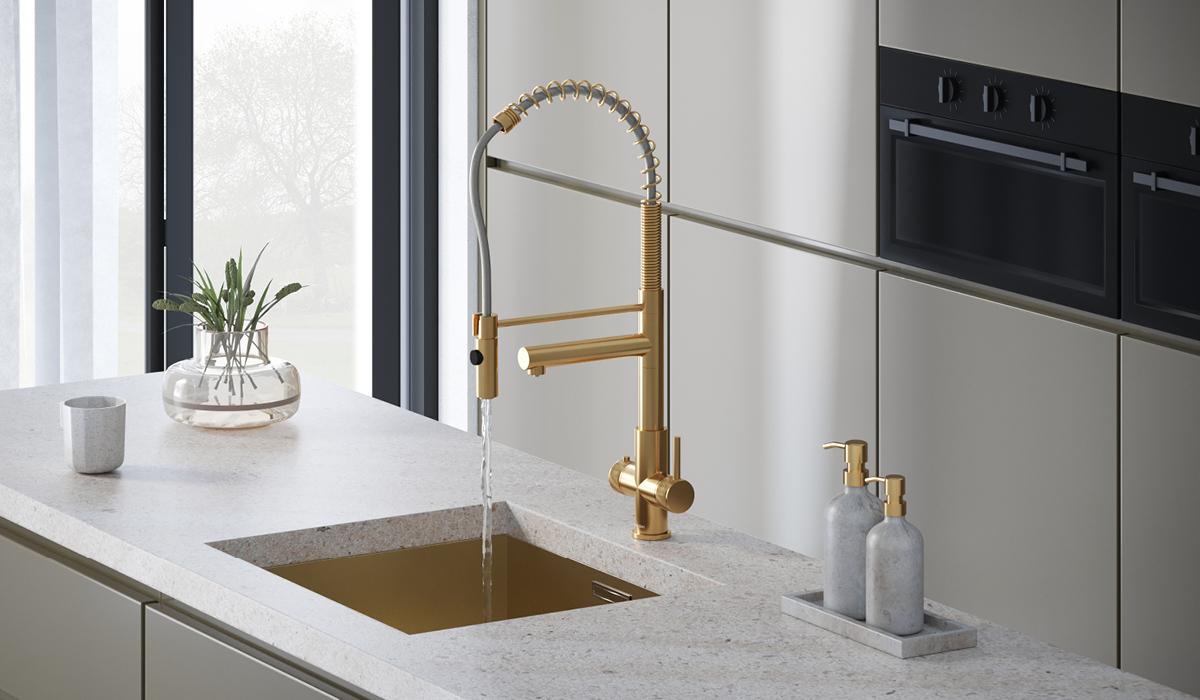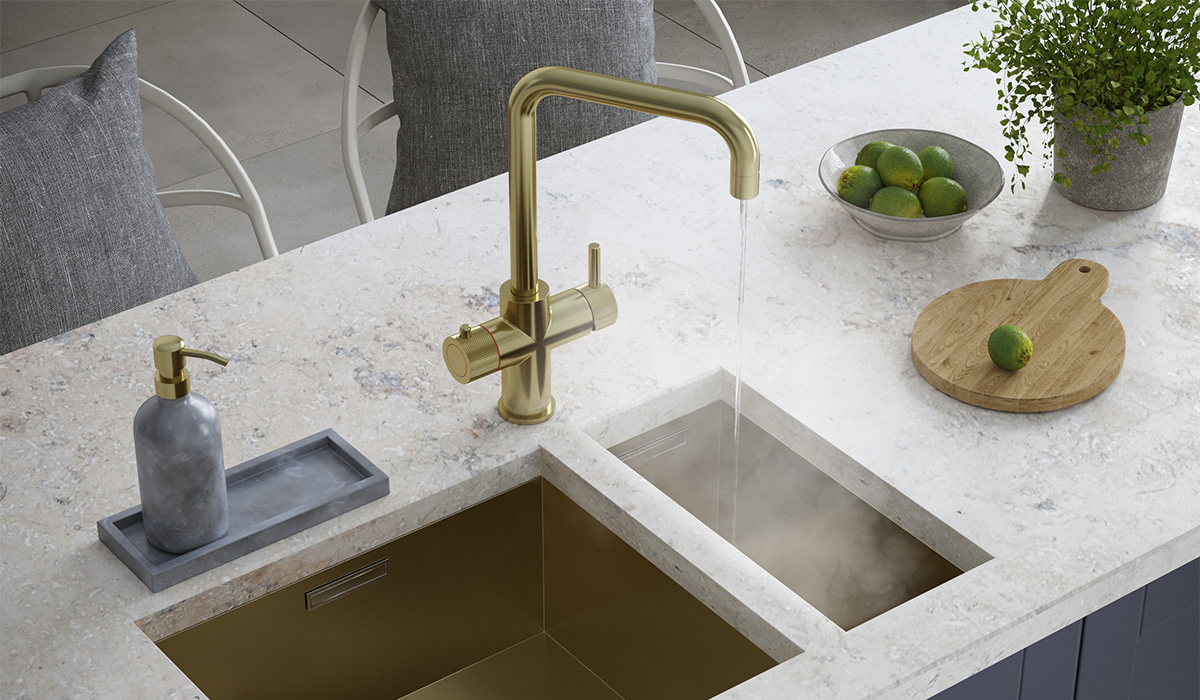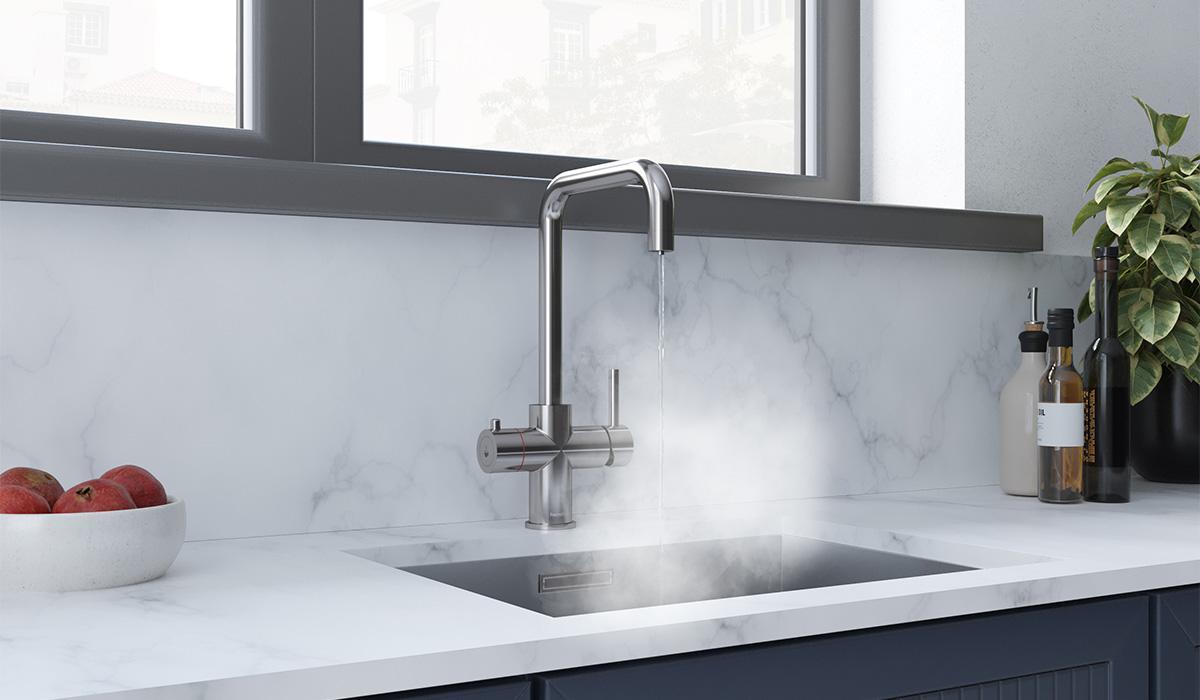Are you planning to renovate your kitchen but unsure where to start? Kitchen renovations can be daunting, but with the right advice and guidance, you can make it an enjoyable experience. By avoiding common pitfalls and mistakes, you’ll save time and money while ensuring that your new kitchen looks just as beautiful as you imagined.
In this blog post, we will go over 12 mistakes to avoid during a kitchen renovation so that you can come out the other side with less stress, mess and hassle.
1. Neglecting Budget Planning
Renovating a kitchen can be exciting, but forgetting to include budget planning in the mix can make things tricky. Too often, kitchen extensions cost much more than expected due to inadequate cost management and research. It’s important to determine a budget upfront, take measurements, and then shop around for fixtures and supplies that fit your kitchen renovation vision and your budget.
Doing so will save time and money in the long run. Always research kitchen extensions cost before continuing with renovating plans to ensure a successful kitchen upgrade without breaking the bank.
2. Not Utilising Professionals
While renovation dreams are exciting, not taking the time to find a professional for kitchen renovations is often a costly mistake. Hiring an experienced contractor can save valuable time and resources and increase your home’s value. A professional can help identify which materials and styles best fit your vision and explain installation options in greater detail.
Additionally, they can provide important information on local permitting needs or building codes you may be unaware of. By heeding these suggestions, you will ensure that your kitchen project avoids the common pitfalls of DIY projects while providing strong returns on the investment you make in it.
3. Lacking Adequate Lighting
During a kitchen renovation, it is important to remember that good lighting is key. Insufficient lighting will make the space feel dull and gloomy and make completing tasks more cumbersome. By having enough light fixtures and considering the amount of natural light available, you can ensure the proper atmosphere for meal preparation or entertaining guests. A well-lit kitchen will look up-to-date and be a pleasure to spend time in. Attention to detail, such as adequate lighting, will help make your kitchen renovation successful.
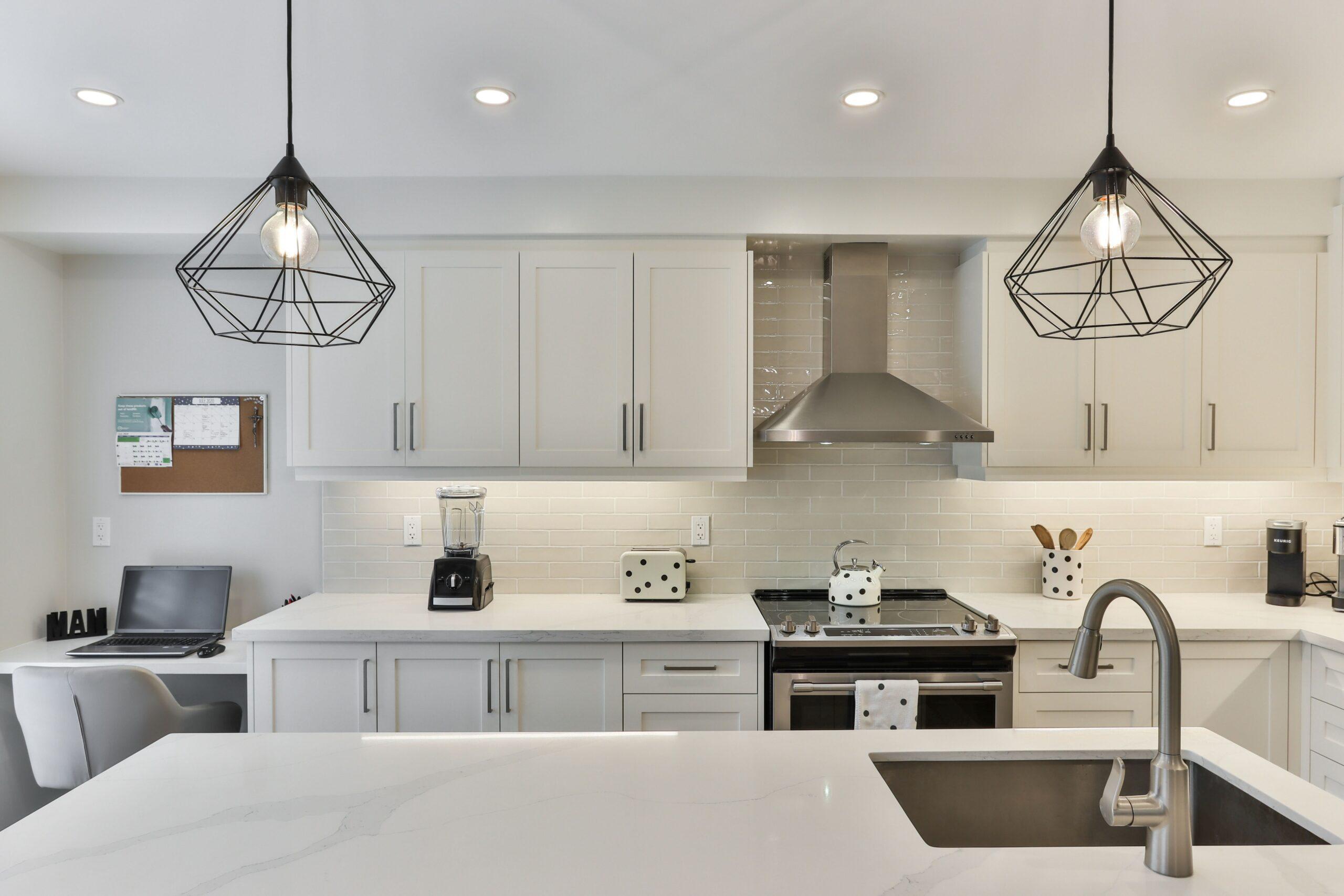
4. Skipping Out on Counter Space
When making a kitchen renovation, having enough counter space is key. Without it, making coffee and cooking food can be difficult, not to mention entertaining guests. Having enough counter space allows you to work quickly and efficiently while making meals or coffee in the morning. It also acts as an extra surface for preparing or serving food for get-togethers with friends and family. By taking the time to make sure that your kitchen has sufficient counter space, you can save yourself from making an expensive mistake down the road.
5. Ignoring Ventilation Needs
During a kitchen renovation, one of the most common mistakes people make is ignoring the necessary ventilation for a successful transformation. Without proper ventilation, lingering smells, smoke, and other pollutants could end up sticking around in the room, making it difficult to enjoy a meal prepared there. Simple solutions such as an overhead exhaust fan or installing air ducts can take care of any existing odour issues and indirectly help regulate the temperature inside your kitchen. These steps will ensure your newly renovated kitchen lives up to its potential and brings much satisfaction for years.
6. Not Selecting Energy-Efficient Appliances
Homeowners often make the mistake of overlooking energy-efficient appliances when renovating kitchens. A boiling water tap, for example, is an example of an advanced appliance that was designed with energy efficiency at its core.
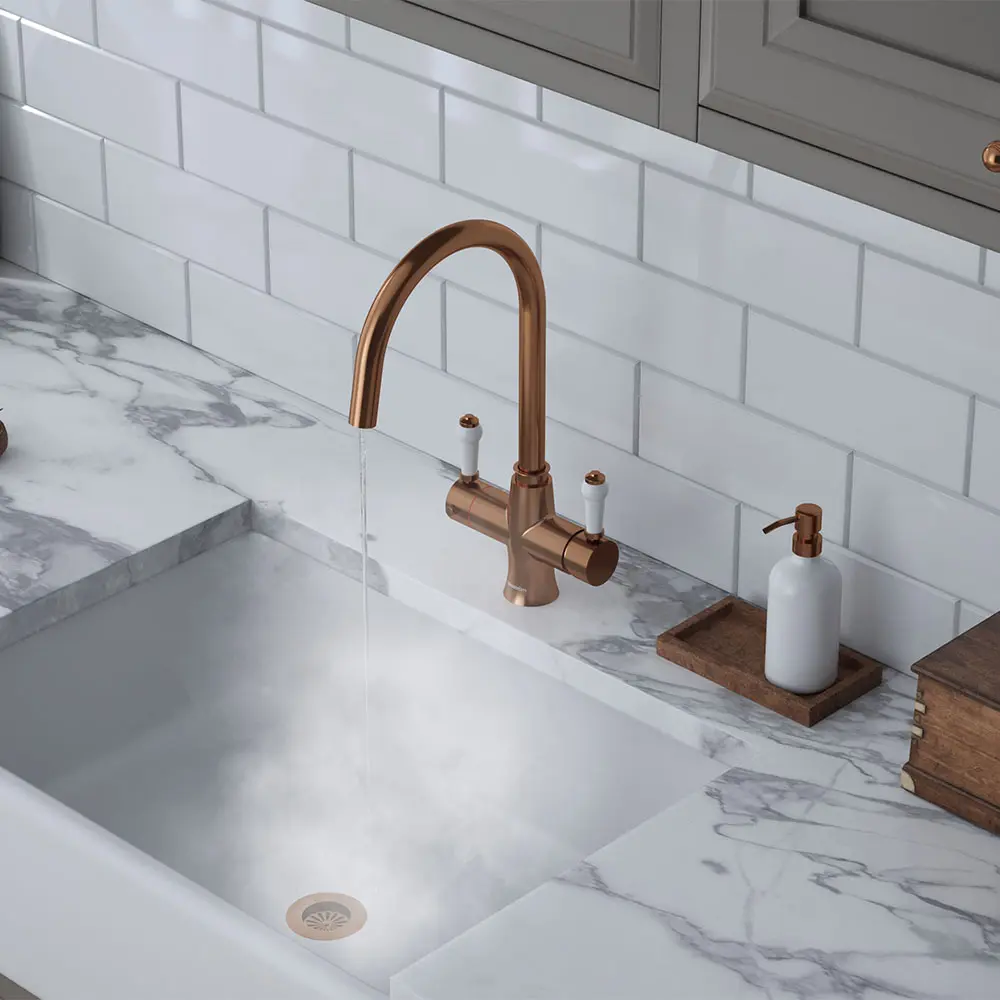
Energy-efficient fridges are also worth investing in as traditional fridges use up to 25% more energy than their newer, efficient counterparts. Another way to reduce energy consumption is to choose an energy-efficient oven – they’ll do a great job preventing heat loss and providing uniform cooking temperatures. When making important decisions during a kitchen renovation, don’t forget to consider the potential savings on your utility bills that come with installing energy-efficient appliances.
7. Failing to Hire a Licensed Electrician
When remodelling your kitchen, you may be tempted to do some of the electrical work yourself or hire someone who isn’t a licensed electrician. However, this is a mistake that should be avoided at all costs. Not hiring a licensed professional for any of the electrical aspects of your renovation can make your kitchen unsafe, as electrical mishaps could lead to shock, fire, and other disastrous results.
Taking shortcuts with your wiring to avoid hiring an expert means putting yourself and those around you in danger. When doing electricity renovations, you hire only an experienced professional for safety and peace of mind.
8. Choosing the Wrong Flooring Options
Choosing the wrong flooring option during a kitchen renovation can be costly in terms of money, time and energy. The wrong type of flooring can lead to cracking, peeling, wear and tear, discolouration and even dangerous slips.

There are so many great options between tiles, linoleum, laminate and hardwood that it’s easy to choose something wrong without considering their durability or maintenance requirements over time. It is best to research before choosing a specific type of flooring for your kitchen, as this will help ensure you have the right product for the job. With careful consideration of price points and style details, you can guarantee that your kitchen renovation result will be perfect for years.
Which Flooring Options are Best for a Kitchen?
When decorating a kitchen, the types of flooring used are critical decisions. Homeowners must select what is aesthetically pleasing and practical for the space between wood, laminate, tile, and vinyl. Wood flooring provides added natural warmth in a kitchen but can wear over time when exposed to water or excessive foot traffic. Laminate comprises layers of pressed wood that give off a similar rustic charm but is more durable than regular wood floors; however, this option can be more challenging to clean.
Tile is best known for its water-resistant qualities and easy-to-clean finish; however, some tiles may easily chip or crack if they don’t have good padding underneath. Vinyl flooring won’t scratch too easily and will provide a waterproof surface with its plastic composition; this can also make it less ideal for sound control. No matter which type of flooring you choose for your kitchen, it’s important to consider its features and limitations before purchasing.
9. Starting Without a Clear Design Plan
Kitchen renovations can be daunting, with many decisions to make. However, before beginning the renovation, it is important to have a clear plan of what the finished room will look like. Without a plan, you will likely select pieces that do not complement one another or don’t fit properly in the space.
Additionally, larger decisions such as fixtures and appliances should not be left until the end as they may set the tone for design elements which come afterwards. Save yourself time and money by creating a detailed design plan up-front and avoid potential delays down the line due to a lack of planning.
How to Create a Floor Plan
Creating a floor plan can seem intimidating, but it doesn’t have to be. Begin using graph paper and a ruler to draw out your room space as accurately as possible. Once the empty floor is created, mark off all your permanent fixtures, such as walls, doorways, windows, and staircases. Mark each of these features with their dimensions to ensure accuracy. It’s also important to measure any furniture or other wall-mounted items if they stay in the same place after the floor plan is created.
Once everything is measured and marked off properly, take some time to make adjustments until the placement of everything matches comfortably with your vision for the room. With this simple method, anyone can create their perfect floor plan.
10. Going Cheap on Quality Materials
When a kitchen renovation is underway, it is tempting to skimp on costs using cheap tiles, worktops and cabinetry. However, this is a mistake that should be avoided at all costs. Cheap tiles can discolour over time or become easily cracked if not made from high-quality material, which would require costly replacements.
Similarly, low-quality worktops and cabinetry could lack durability and add many additional problems in the future. Quality materials also provide long-lasting safety in the kitchen to ensure straightforward preparation and proper maintenance. Consequently, spending a little more on tiles, worktops, and cabinetry now will guarantee quality results for many years and are well worth the investment for any kitchen renovation project.
11. Overloading Circuits and Plugs
When doing a kitchen renovation, safety should be a top priority. One mistake that is often made and should be avoided is overloading circuits and plugs. A circuit can handle only so much electricity, and unintentionally overloading it can result in avoidable hazards such as sparking or even an electrical fire.
Unplug and turn off any electrical appliances before making any changes to the wiring or outlets and know the maximum amperage rating of your circuit breaker to prevent overloads. Safety around electricity is paramount in a kitchen renovation, and by avoiding overloading circuits and plugs, you can ensure that everyone involved stays safe throughout the process.
12. Skipping Proper Measurements
Kitchen renovations can be tricky, with all the different measurements of shelves, cabinets and counters that must be considered for the perfect look. Skipping proper measurements can lead to a kitchen renovation that doesn’t integrate as seamlessly as you’d like. If all the different components don’t sync together correctly, your kitchen may look cramped and misshapen.
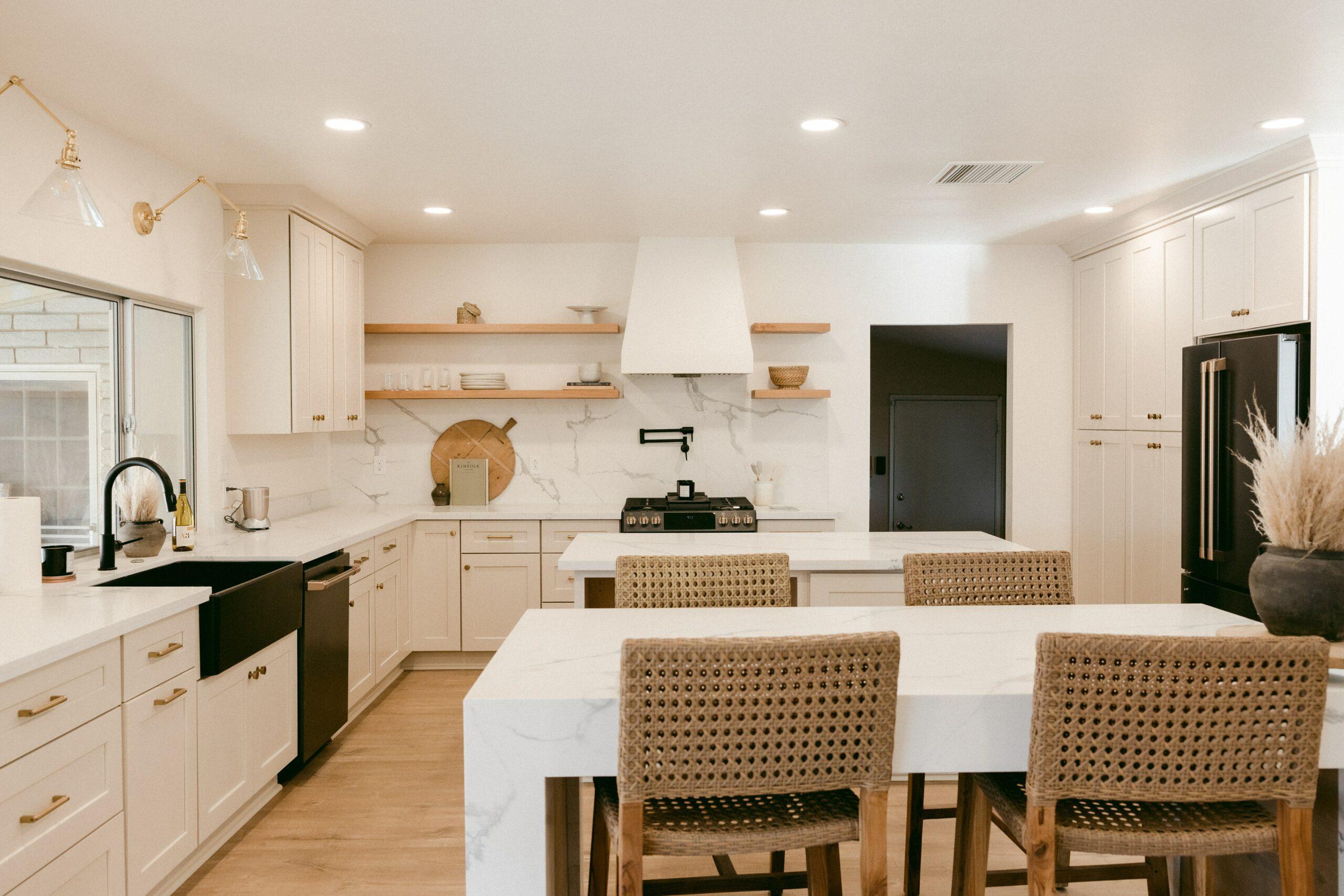
Instead of gambling on estimates during renovation projects, it is best to take accurate measurements to get the most out of your project. Without taking the necessary steps toward precision in your planning process, you risk limiting your style and budget expectations when renovating your kitchen.
How Long Do Kitchen Renovations Take?
Kitchen renovations can seem daunting and overwhelming, especially if you wonder how long the process will take. On average, it takes from four to ten weeks to complete a kitchen renovation. However, the timeline depends on your renovation’s complexity and size.
Hiring professionals to help with different aspects, such as plumbing, drywall, tiling, and painting, can help accelerate the process. It is also important to consider ordering materials in advance for a hassle-free renovation experience. With proper organization, planning and attention to detail, those looking to spruce up their kitchen can enjoy the refreshed space in no time!
Conclusion
Kitchen renovation is a great way to breathe new life into your kitchen, but it can quickly become overwhelming with all the details to consider. By making sure that you avoid these 13 kitchen renovation mistakes, you can ensure that your kitchen remodel will be a successful one!
From setting a budget and planning accordingly to investing in quality materials and taking proper measurements, kitchen renovations can be a smooth and enjoyable experience with the right preparation. With these tips, you’ll be closer to your dream kitchen!
Read more about boiling water taps, learn how a boiling water tap works or shop our full collection of boiling water taps.



